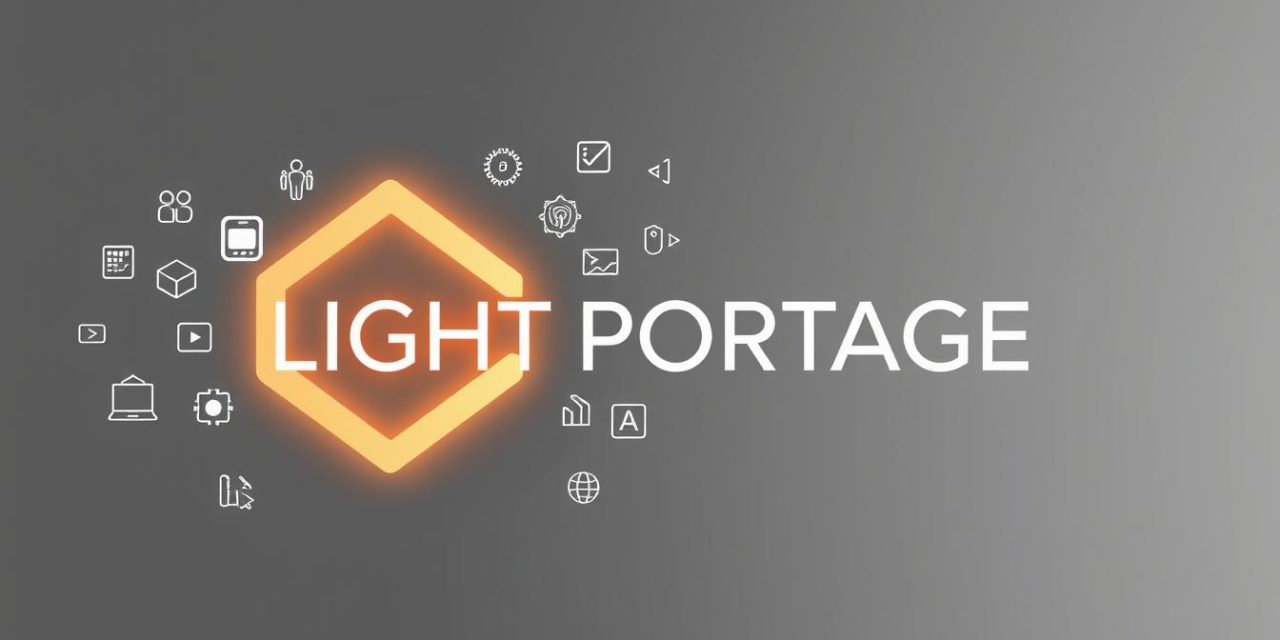When Marc launched his freelance design practice, months passed with few requests. He sent emails, wrote posts, and waited. One steady week of small tests changed everything: a clearer offer, a focused page, and a simple email sequence. Responses doubled and calm replaced uncertainty.
We write this article to help you make that shift too. Think of customer acquisition as a measurable system you can control. With precise steps—web, SEO, content, social, paid ads, and simple automations—you stop hoping and start growing reliably.
Our approach asks you first to define an ideal profile and a crisp value promise. Then you build a lean foundation: high-performing pages, local SEO basics, and content that answers real pains.
Table of Contents
Key Takeaways
- Reframe acquisition as a repeatable, testable process you control.
- Define your ideal client and value proposition before spending.
- Focus on a strong website, clear SEO, and content that converts.
- Use targeted paid tactics and simple email nurturing to scale.
- Track CAC, CLV, and conversion to improve ROI with calm, steady steps.
Understand client acquisition for independent professionals today
Turning first contact into a paid engagement is the practical skill that stabilizes a solo practice. Define what this process means: moving a prospect from initial awareness through decision and payment. That pathway increases predictable revenue and protects your chiffre affaires.
Why it matters now: buyers in France research fast—82% spend under ten minutes—and 53.5 million use social networks. This changes habitudes achat and makes each touchpoint valuable.
From awareness to revenue: why acquisition drives sustainable growth
Modern funnels run Awareness → Interest → Consideration → Intention → Purchase. High friction kills momentum: up to 96% drop off if steps are unclear.
« Make each touchpoint remove friction; the smoother the journey, the higher your conversion. »
- Be measurable: track traffic, CTR, shares, and conversion to link actions to chiffre affaires.
- Prioritize: quick outreach and targeted ads fund durable assets like SEO and content.
Offline vs. digital: choosing the right mix for your services
Traditional levers—cold calls, mailers, trade shows, sponsorships—still work in B2B and local markets. Digital tools—social, content, SEO, Google Business Profile—offer precision and real-time measurement.
- Define target segments with personas and data.
- Deploy campaigns on the most relevant channels with consistent messaging.
- Measure performance and iterate.
When you need a practical mode d’emploi, start by elaborating your strategy, map channel roles, and keep the buyer’s expérience client smooth.
Map your client acquisition funnel from awareness to purchase
Map each stage of the buyer journey so every touchpoint leads someone closer to a decision. Start by naming the stages you will measure: Awareness, Interest, Consideration, Intention, Purchase, then retention.
Top of funnel: visibility and traffic sources
TOFU is about broad reach and low-commitment actions. Use blogs, short videos, social posts, and PR to help prospects self-identify as potential fits.
Goal: impressions, profile views, and content reads. Focus on clarity and relevance, not a hard sell.
Middle of funnel: interest, consideration, and trust-building
MOFU signals are email signups, webinar joins, and resource downloads. Respond fast with useful, trust-building info.
Deepen trust with case studies, FAQs, pricing context, and testimonials. These elements shorten evaluation and guide a prospect toward intent.
Bottom of funnel: intent signals, offers, and conversion
BOFU actions include booking a consult, requesting a quote, or starting a trial. Answer with tight offers, clear next steps, and risk reversals.
- Reduce friction to improve taux conversion: fewer fields, calendar links, and clear pricing ranges.
- Make handoffs seamless: confirmations, calendar invites, and pre-call briefs to boost expérience client and reduce no-shows.
- Instrument each stage with metrics so you can diagnose leaks and prioritize fixes.
Define your ideal client and value proposition before launching campaigns
Start by precisely naming who you want to serve and the outcome they expect. This focus saves time and money when you plan channels and messaging.
Create buyer personas from your client list, CRM notes, interviews, and external datasets. Capture demographics, behaviors, preferred content formats, budget ranges, and common objections. Segment by market types so offers match buying context.
Create buyer personas from client data and market research
Map jobs-to-be-done for prospects and clients potentiels. Note the risks they avoid and the outcomes they seek. Use these insights to craft messaging that answers real pain points.
Craft a clear value proposition that answers “why you?”
Your proposition should state who you help, the core problem you solve, how your service is different, and the measurable results you deliver. Back it with case study proof, logos, and simple process visuals.
| Step | What to capture | Quick use |
|---|---|---|
| Persona build | Decision-maker, trigger, budget | Targeted messaging |
| Channel map | Preferred formats, platforms | Content plan for prospects |
| Value test | Offer clarity, proof points | Small-scale test to acquérir nouveaux |
Align your services to buyer complexity with clear tiers. Then document positioning so every campaign and page stays coherent and trustworthy. Test messaging, collect feedback, and use results to élaborer stratégie before scaling.
Build a high-performing site web as your acquisition base
Your site should act as the single reliable base that guides prospects toward decisions. Treat every channel as a road that leads back to focused pages with clear next steps.
Essential pages: home, service pages, and campaign landing pages
Create a conversion-focused home page with a clear value proposition, a primary CTA, and visible social proof. Keep service pages concise: outcomes, process, pricing context, FAQs, and a case study snippet.
For ads and newsletters, build single-goal landing pages that mirror the ad promise. Remove distractions to lift completion rates and measure impact.
UX and mobile performance: speed and clarity that lift conversion
Improve performance with fast load times, readable typography, and tap-friendly CTAs. Short forms and clear microcopy reduce friction on mobile devices.
- Trust signals: reviews, logos, certifications, and a Google Business Profile for local credibility.
- Measure and iterate: track traffic sources, CTR, scroll depth, and form completions to prioritize fixes.
- Basic SEO: apply optimisation moteurs recherche—titles, H1–H3, and internal links—so searchers find the right page for their intent.
SEO and optimisation moteurs de recherche for steady, high-intent traffic
A well-tuned search presence draws people already ready to hire into your site. Treat SEO as an organic system that converts intent into contact. Focus on clear signals for both users and search engines.
Keyword research aligned to service intent and local reach
Start by listing the problems your prospects search for and the places you serve. Map commercial keywords to service pages and local queries to location pages.
Tip: include geo modifiers and verbs that show intent (book, hire, price) to lift relevance.
On-page SEO: structure, internal links, and compelling meta data
Use the primary keyword in the title and H1, and add descriptive H2/H3s that guide readers. Keep meta titles and descriptions clear, action-oriented, and honest.
Internal links should route visitors from informative guides to conversion pages. Each page needs one focused purpose and a single primary CTA.
Local SEO and Google Business Profile to win nearby prospects
Complete your Google Business Profile: categories, services, hours, photos, and review replies. Embed NAP, a map, and service-area cues on the relevant page templates.
- Build authority with steady publishing and relevant backlinks.
- Fix technical hygiene: mobile speed, clean URLs, and schema for services and reviews.
- Track rankings, impressions, and clicks—and compare them to lead quality so SEO supports real acquisition goals.
« SEO is less about tricks and more about making your site the simplest answer to a real search. »
Marketing de contenu: blog posts, articles, and resources that attract prospects
Publishing focused resources helps prospects find practical answers and see your value quickly. A clear editorial plan aligns topics with the exact problems your audience faces.
Topic strategy: prioritize pain points, common objections, and concrete use cases. Target queries that mix search demand with commercial intent so each piece supports conversion.
Content formats that fit your time and strengths
Choose formats you can sustain: short articles for fast wins, explainer videos for complex steps, podcast interviews for credibility, and concise white papers that anchor a service offering.
Distribution: make one asset work harder
Turn a core article into multiple posts and short clips. Publish on your site, announce in a newsletter, and share contextual excerpts on social channels.
Measure beyond page views. Track qualified leads, replies, and how content shortens the sales cycle. Double down on topics that convert; prune those that do not.
| Goal | Format | Key action | Metric |
|---|---|---|---|
| Answer a pain point | How-to article or guide | Define one search intent, include clear points and CTA | Leads per 1,000 visits |
| Showcase expertise | Video or podcast | Repurpose clips as social posts and newsletter highlights | Engagement rate and replies |
| Anchor an offer | White paper or case study | Use data, process, and a consult CTA | Consult bookings from content |
For practical steps, follow a content calendar that mixes evergreen guides, comparisons, and timely commentary. If you want a concrete outreach playbook, see how to find clients online and adapt those tactics to your editorial rhythm.
Réseaux sociaux comme Facebook, Instagram, LinkedIn: attract and engage nouveaux clients
When you match format to platform, social media moves prospects from curiosity to contact. In France, 53.5 million people use réseaux sociaux and spend nearly two hours daily. That scale makes consistent effort worthwhile.
Choose platforms that match your audience and services. Use LinkedIn for B2B offers, Instagram for visual work, and Facebook for local reach. Set one clear objective per channel—awareness, list growth, or consult bookings—and adapt cadence and tone.
Create posts and stories that convert attention into inquiries
Lead with value: tips, mini case studies, before/after visuals, and short objection-handling posts. Use Stories or Reels for immediacy and carousels for step-by-step proof.
- Use native features—Lives, Reels, LinkedIn long-form—to expand reach and drive profile clicks.
- Boost top-performing posts with modest sponsored spend targeted by location and interests.
- Engage promptly: reply to comments, invite DMs, and follow up with clear next steps.
Measure what matters: track profile clicks, link clicks, and booked calls rather than vanity likes. Build community with AMAs, client wins (with permission), and peer collaborations to accelerate trust.
For practical templates and channel ideas, see how to leverage social channels in our guide: leveraging social media for freelance work.
Google Ads and Facebook Ads: paid acquisition for predictable lead flow

Paid search and social ads give you a fast, measurable path to predictable leads when set up correctly. Use search intent and social discovery together to cover the funnel efficiently.
Targeting and messaging that align with funnel stages
Match creative to stage: broad hooks for TOFU, proof-led messages for MOFU, and offer-driven retargeting for BOFU.
Use google ads for high-intent queries and Facebook Ads to expand reach and interest. Separate campaigns by intent to measure performance clearly.
Landing page relevance to reduce CAC and boost conversion
Ensure headline continuity, mirrored value, and the same CTA from ad to page. This tight match improves quality score and protects your taux conversion.
- Mitigate rising CPMs by improving creative relevance and audience specificity.
- Test headlines, visuals, and windows; track CAC and pause underperformers weekly.
- Use tailored retargeting and exclude recent converters to avoid waste.
When you combine disciplined tests with relevant landing pages, paid channels deliver steady acquisition at scale.
Email marketing and newsletter to nurture clients potentiels
A tightly designed newsletter can turn casual visitors into reliable, repeat buyers over months.
Email still drives measurable revenue when you build a clean list and respect subscribers. Start with lead magnets that solve a single pain: checklists, short templates, or a quick pricing guide. These attract the right people and set expectations.
Design a friction-light sign-up UX: one or two fields, clear value, instant delivery, and social proof. That improves opt-in rates and keeps your base healthy.
Automations that educate, segment, and convert
Use a welcome series to introduce your work, share a case study, and offer a consult. Segment by interest and stage so messages stay personal. Apply behavior triggers—resource opens, browse reminders, or event nudges—to send timely follow-ups without pressure.
Measure conversion per sequence, adjust cadence, and remove inactive addresses to preserve deliverability. Integrate with your CRM so replies and bookings are logged and handled quickly, strengthening your relation client.
| Element | What to do | Why it matters | Quick metric |
|---|---|---|---|
| Lead magnet | Checklist or template | Improves relevance of sign-ups | Opt-in rate |
| Welcome series | 3–5 helpful emails | Builds trust and invites action | Conversion rate per series |
| Behavioral automations | Browse, open, click triggers | Sends timely, personalised follow-ups | Qualified leads generated |
Referrals, affiliation, and word-of-mouth programs that scale trust
Word-of-mouth scales when you design a repeatable path for people to share and be rewarded. Referral programs reward those who bring in new buyers and often cost far less than paid ads. Tools can automate tracking, messaging, and reward delivery so the process stays reliable.
Design simple incentives that spark shares. Offer two-sided rewards: a thank-you for the referrer and a welcome perk for the referred to lower friction and boost conversion.
- Invite natural advocates—satisfied customers and partners—with clear rules and easy share links.
- Automate tracking from day one: unique codes, CRM attribution, and periodic pipeline reports.
- Follow bonnes pratiques: transparent terms, prompt fulfillment, and templates to make referrals effortless.
- Layer affiliation with aligned creators to reach new segments and preserve high lead quality.
| Focus | Action | Outcome |
|---|---|---|
| Advocate identification | List satisfied users and partners | Higher-quality prospects |
| Tracking | Unique links, CRM tags | Clear revenue attribution |
| Incentives | Two-sided rewards + templates | Better conversion and repeat business |
Celebrate advocates publicly (with permission) and monitor lead fit, not just volume. To see practical examples and adapt this approach, explore our success stories as you élaborer stratégie for long-term growth in relation client.
Events and webinars: demonstrate expertise and accelerate consideration
Webinars translate content into conversation, turning passive readers into engaged prospects. Run short, focused sessions (30–45 minutes) that solve a single, pressing problem and map directly to your services.
Promote events through email, social, and partner newsletters. Share a clear agenda, speaker credentials, and concrete takeaways to boost sign-ups.
Design for interaction: include live Q&A, quick polls, and real examples that mirror common business decisions. This reduces friction in buying habits (habitudes achat) and speeds consideration.
- End with one clear next step: book a short consult, request an audit, or download a toolkit.
- Repurpose recordings into clips, articles, and slides to extend reach and reinforce authority.
- Capture questions and objections to inform future content and improve offers aimed to acquérir nouveaux clients.
« Measure registrations, attendance, engagement, and post-event meetings to validate impact and refine your approach. »
CRM and gestion de la relation client to systematize follow-up

Systematic follow-up prevents promising prospects from slipping through the cracks. A lightweight CRM becomes your single source of truth for the sales funnel and relation client. It reduces manual work and preserves context across conversations.
Pipeline stages, scoring, and reminders that prevent lead leakage
Choose a CRM that syncs email and calendar, shows a clear pipeline, and has easy setup. Simplicity improves adoption for independent professionals.
- Define stages from New Lead → Qualified → Proposal → Closed Won/Lost with exit criteria so you can forecast reliably.
- Score leads by fit (ICP signals) and behavior (engagement) to prioritise outreach where it matters most.
- Automate reminders and SLAs for first response times; fast, consistent replies improve conversion and overall performance.
- Log every touchpoint — emails, calls, notes — so each interaction feels personal and informed.
- Integrate marketing sources to see which channels create the most sales-ready prospect conversations.
Use automation thoughtfully: meeting links, task creation, and gentle nudges save time without sounding robotic. Review stage conversion rates and stuck deals weekly to remove bottlenecks.
« A clear pipeline plus small automations turns sporadic outreach into predictable, measurable progress. »
For a practical checklist and setup tips, see our guide on secure client management.
Automation and AI: smarter acquisition workflows in the present landscape
AI tools can qualify prospects quickly while keeping conversations natural and human-centred. They free time and make follow-up reliable without losing the personal touch that builds trust.
Deploy chatbots on key pages to answer FAQs, capture basic details, and route high-intent visitors to a human when needed. Log every conversation into your CRM so nothing is lost.
Chatbots and assistants for lead qualification and FAQs
Use assistants to suggest resources and next steps based on pages visited. This reduces drop-off and nudges prospects toward booking a meeting.
Predictive audiences and creative testing to improve performance
Build predictive audiences from your best customer signals to cut wasted spend. Then automate creative testing: rotate headlines and visuals, let algorithms find winners, and focus your time on message quality.
- Follow bonnes pratiques: disclose bots, offer easy human escalation, and record interactions into the CRM.
- Automate routine types of tasks—reminders, status updates, and follow-ups—so your energy stays on delivery and strategy.
- Monitor model bias and data quality; keep humans in the loop for sensitive choices.
« Start simple, measure uplift in response rates and bookings, and scale automation where it clearly improves performance. »
Client acquisition metrics that matter: CAC, CLV, churn, and taux de conversion
Measure the numbers that link effort to revenue so you know what’s truly working. Start with simple definitions: CAC equals total acquisition spend divided by new customers. CLV estimates total revenue from a customer over the relationship. Churn is the percentage who stop buying over a period. The conversion rate is the share of leads who complete a desired action.
Set targets and dashboards to evaluate channel performance
Define your metric stack: CAC, CLV, churn, conversion rate by stage, cost per lead, and time-to-close. Pick target ranges that match your margins and capacity.
Build a simple dashboard that compares channels on volume and efficiency. Use cohort analysis to reveal retention and expansion over time. That shows whether your acquisition efforts attract the right segments.
Test-and-learn: A/B testing offers, pages, and messages
Run A/B tests on offers, headlines, layouts, and email sequences. Keep tests focused: one change at a time, a clear hypothesis, and a documented outcome.
« Track not only taux de conversion but also revenue per lead so decisions improve chiffre affaires, not just clicks. »
- Run tests long enough to be meaningful, but keep cycles brisk to learn fast.
- When churn rises, review onboarding and delivery quality—post-purchase experience affects ROI.
- Apply bonnes pratiques: defined hypotheses, single-variable changes, and recorded learnings.
| Metric | Definition | Action |
|---|---|---|
| CAC | Total acquisition spend ÷ new customers | Compare to CLV; lower CAC improves margin |
| CLV | Estimated revenue per relationship | Use to set acceptable CAC and prioritize retention |
| Churn | % who end relationship in a period | Investigate onboarding and service quality if rising |
| Taux de conversion | % of leads completing the desired action | Track by funnel stage and revenue per lead |
Tie all metrics back to your chiffre affaires and capacity planning. A clear dashboard and steady experiments let you invest where growth is profitable and sustainable.
Prioritize channels, budget wisely, and iterate your stratégie acquisition
Prioritizing a small set of high-impact channels makes growth predictable and less stressful. Map each channel by impact versus effort and double down on the few that reliably fill your pipeline.
Elaborer stratégie with a quarterly rhythm: set clear goals, assign budgets, schedule experiments, and run a weekly review to act on data.
Allocate budget across three buckets: compounding (SEO and content), reliable (email and referrals), and scalable (paid ads and events). Results peut être uneven at first; pace spend and stage tests to protect runway.
- Document playbooks for repeatable wins and fast onboarding.
- Review quarterly: keep, improve, or cut channels based on CAC, conversion, and fit.
- Treat this as a continuous loop—build, measure, learn—so systems improve each cycle.
Ethical, respectful communication wins long-term trust over short-term spikes.
Conclusion
Build a simple base and let measured tests compound into predictable web results. Start with a focused site web and essential pages. Use your blog and clear page offers to educate prospects and guide them toward your service.
Invest in sites web and articles that rank in moteurs recherche while you use réseaux sociaux and modest google ads or facebook ads to drive targeted attention. Pair those channels with a short newsletter to nurture interest.
Keep the expérience client smooth from first click to signed service. Small, steady tests on pages, posts, and web performance will lift results and protect your chiffre affaires over time.
FAQ
What is the most effective first step to maximize client acquisition as an independent professional?
Start by defining your ideal customer and a clear value proposition. Use real data from past engagements and market research to build buyer personas. This foundation guides your messaging across website pages, service offers, and paid channels like Google Ads and Facebook Ads, ensuring efforts reach the right prospects and improve conversion rates.
How should I map the acquisition funnel from awareness to purchase?
Structure the funnel into three stages: top (visibility via SEO, social, blog posts), middle (trust-building through case studies, newsletters, and targeted content), and bottom (offers, landing pages, and clear calls-to-action). Track intent signals and move prospects with tailored messaging and timely follow-up using a CRM to avoid lead leakage.
Which digital channels should I prioritize for reliable lead flow?
Prioritize channels that match your audience: organic search (SEO) for high-intent traffic, social platforms like LinkedIn or Facebook for professional and local outreach, and paid search or social ads for predictable volume. Balance tests across these channels and allocate budget where CAC and conversion metrics look strongest.
How can I design my website to boost conversion?
Build essential pages—service pages, landing pages, and a conversion-focused home page—with clear value propositions and visible CTAs. Optimize UX and mobile speed, simplify forms, and ensure landing pages match ad messaging to lower bounce rates and improve conversion performance.
What SEO practices deliver steady, high-intent traffic?
Focus on keyword research tied to service intent and local search, optimize on-page elements (titles, headers, meta descriptions), use internal linking, and maintain helpful content like blog articles and resources. Claim and optimize your Google Business Profile to capture nearby prospects.
How do I use content marketing to attract and nurture prospects?
Create a topic strategy that answers pain points, handles objections, and showcases use cases. Mix formats—articles, videos, podcasts—and distribute via your site, newsletter, and social. Use lead magnets and email automations to convert readers into qualified leads over time.
When should I use paid ads versus organic methods?
Use organic channels for long-term steady traffic and authority building. Deploy Google Ads and Facebook Ads when you need predictable lead flow or to accelerate growth. Ensure ad targeting and landing pages match funnel stages to reduce CAC and raise conversion rates.
What role do social networks play in acquisition?
Social platforms help with visibility, engagement, and direct inquiries. Choose networks aligned with your audience—LinkedIn for B2B, Instagram or Facebook for consumer services—and craft posts and stories that move attention into inquiries or sign-ups.
How can email marketing and newsletters support conversion?
Use lead magnets and optimized sign-up UX to grow a quality list. Implement automations that educate, segment, and nurture prospects with relevant offers. Regular newsletters keep your brand top-of-mind and help convert prospects into paying buyers.
What CRM practices prevent lead leakage?
Define pipeline stages, use lead scoring, set automatic reminders, and log all interactions. A disciplined CRM process ensures timely follow-up, consistent qualification, and clearer visibility of where prospects stall so you can act before opportunities are lost.
How do referrals and affiliation programs scale trust?
Design simple, measurable incentives—discounts, commissions, or service credits—that motivate partners and past buyers to refer others. Make the referral process frictionless and track performance to reward top referrers and iterate the program.
What acquisition metrics should I monitor first?
Track cost per acquisition (CAC), lifetime value (CLV), conversion rates across funnel stages, and churn. Set targets and dashboards so you can compare channel ROI, run A/B tests on offers and pages, and prioritize budget to the highest-performing tactics.
How can automation and AI improve my workflows?
Use chatbots for lead qualification and basic FAQs, automations for lead nurturing and segmentation, and predictive audiences for better targeting. Combine creative testing with automated reporting to scale improvements while preserving personalized outreach.
How do I choose the right mix of offline and digital tactics?
Match tactics to your service and buyer habits. Use events and webinars to demonstrate expertise and accelerate consideration for complex services. Complement with SEO, social, and paid ads for reach. Prioritize channels that show measurable impact on revenue and retention.
What budget approach works for independent professionals?
Start with a modest test budget across two to three channels, measure CAC and conversion, then reallocate toward the best performers. Emphasize low-cost content and local SEO early, scale paid campaigns only after verifying landing page relevance and offer-market fit.





